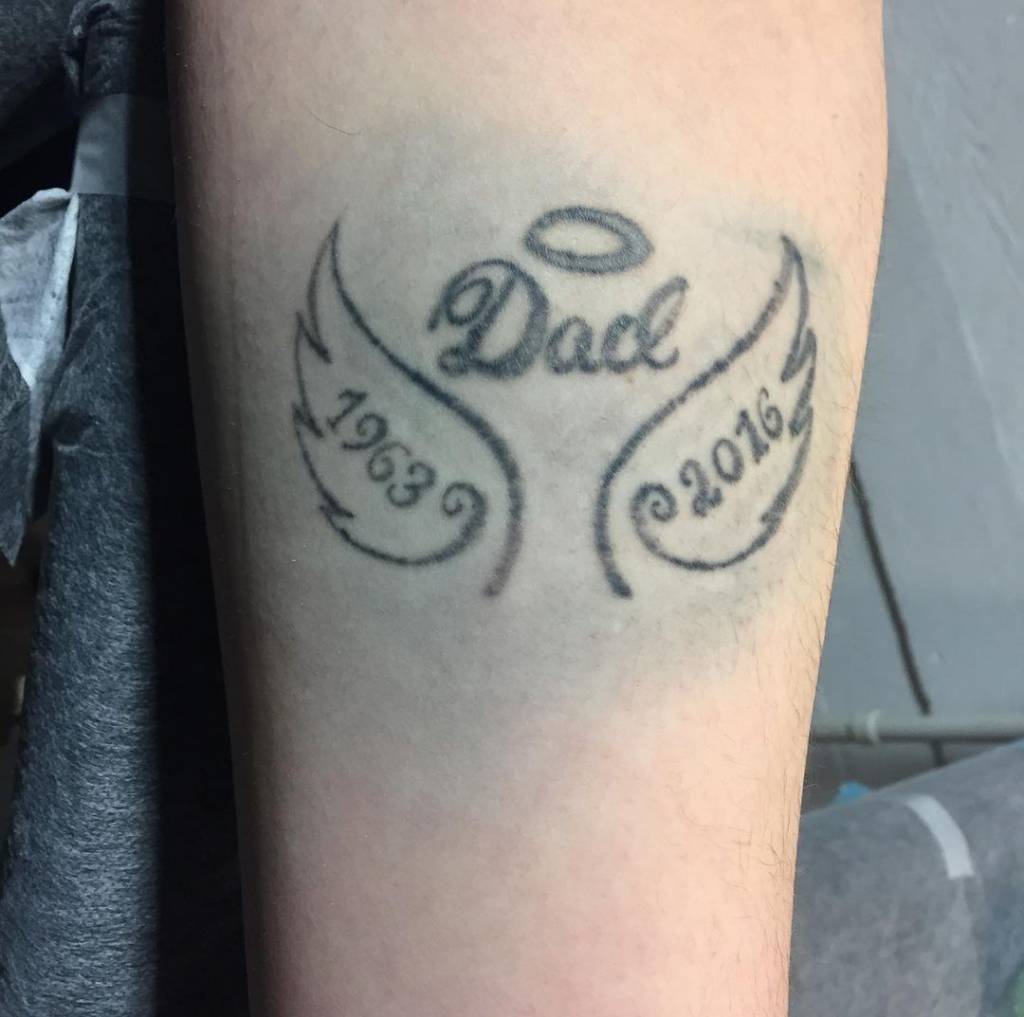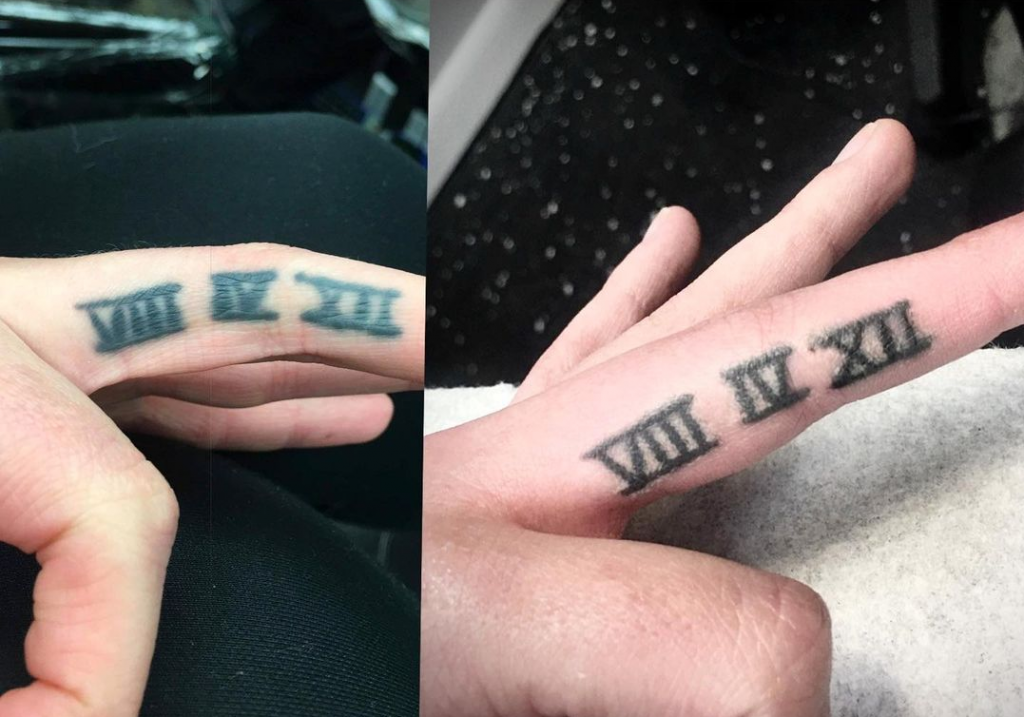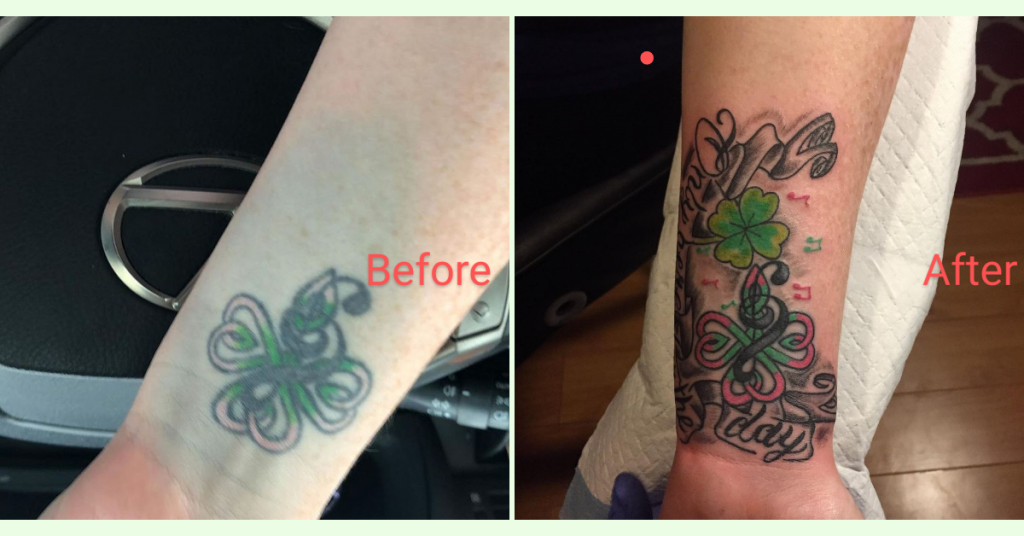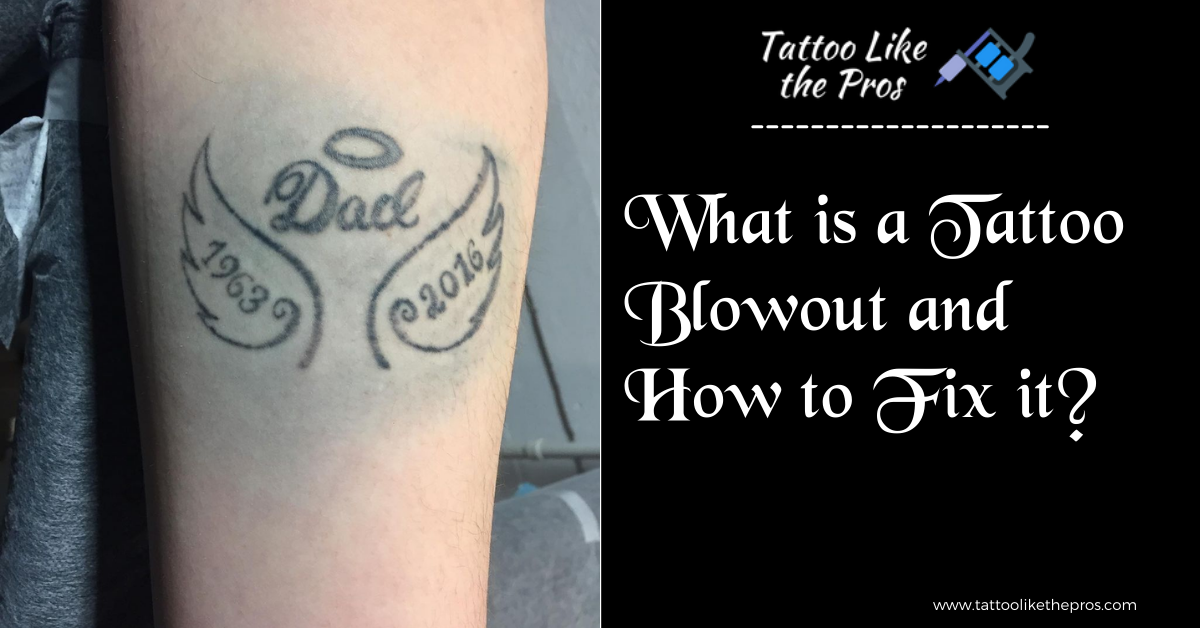One of our biggest worries is ending up with a tattoo that looks messy, smudged, or blurry. A tattoo blowout isn’t exactly pleasant to look at, and it’s less likely to have occurred if you’ve trusted the hands of a talented artist having the right amount of experience. Yet, you should know how to prevent or fix such adverse, unexpected outcomes.
Are you among the unlucky ones having to put up with a “tattoo blowout?” If that’s the case, now is the time to stop worrying. In this article, you’ll learn what a tattoo blowout is, how it looks, what causes it, and the methods available to fix it. We’ll also show you how to prevent it.
What Does Tattoo Blowout Mean?
Before knowing the methods for treating or covering a tattoo blowout, you should know what a tattoo blowout is. The symptom — the “blowout” — occurs following an inexperienced tattooist’s heavy-handedness or inefficient handling of the tattoo machine.
When the ink gets inserted too deep into the skin, ending up into the fat layer, this causes the pieces to appear unsightly blurry, smudged, or runny at the surface of the skin. The ink injected mistakenly in the fat layer moves beyond your tattoo lines and ruins the image.
Although a tattoo blowout isn’t harmful to your health, it does, however, distort the look of your tattoo. A murky, ugly tattoo isn’t on anyone’s cards, yet if it happens, you ought to get it fixed.
Many causes increase the chance of a blowout. Yet, there’s one that is blamed most often — the lack of experience of the tattoo artist. That said, the experienced artists aren’t exactly immune from the blowout either. Yet, they know how to prevent the design from getting ruined from the blowout.
What Does a Tattoo Blowout Look Like
Noticing the signs of a mild or more severe tattoo blowout happens very shortly to several days after you get the new tattoo. The lines of your tattoo will appear blurred as the ink is injected into the wrong skin layer, thus bleeding outward. The result is a smudged appearance as shown below.

The Different Causes of a Tattoo Blowout
As mentioned earlier, when the tattoo needle is pushed deeper than necessary, it ends up entering the fat layer and spreads away from the intended lines of the design. The resultant blurring effect is what we call a tattoo blowout.
The ink disperses in an unstructured manner in the fat layer due to that layer’s unique pressure and cell structure. Given below are some of the most common causes known for a tattoo blowout to occur.
Cause # 1: Heavy-handedness or inserting the needle at the wrong angle
The first cause is the most common and painful cause of a tattoo blowout. When the heavy-handed tattoo artist applies too much pressure, pushing the needle and hence the ink deeper than required into the skin, it results in a blowout. The ink gets absorbed into the tissue of the fat layer and bleeds into neighboring areas.
On the flip side, too little penetration can also cause a blowout. This happens because the ink gets injected into the uppermost layers of the skin and ends up bleeding in the surrounding regions.
The above points imply that the pressure should be just right, which is something mastered with experience. Yet, that’s not the only mistake an inexperienced artist can make resulting in the blowout.
Another common mistake an inexperienced artist might make is applying the tattoo machine at the wrong angle. Doing so causes a blowout situation as the ink disperses into the surrounding tissue. The chances of a blowout by injecting ink at the wrong angle are more likely with black rather than colored ink.
Cause # 2: Very thin skin
This second major cause is known best to those who have gotten areas of their body tattooed with very thin, delicate layers of skin. These delicate areas have less tissue under the skin, giving the needle an effortless entry into deeper skin depths. The chance of a blowout is likely in these areas compared to areas with thick skin.
Where the skin layer is very thin, the needle naturally pierces into the lower, deeper areas of the skin. This causes the potential for a blowout to occur quite easily. Most people have very thin skin on their eyelids, tops of hands and feet, wrists, ankles, fingers, and toes.
Thinking of getting tattooed on a rare region like behind the knees or inside the elbow? Well, you need to be aware, these areas are some of the most prone to experience a tattoo blowout. Again, the thing to keep in mind is that a professional artist with an incredible experience is your best bet to cut the risk of experiencing a tattoo blowout.
Cause # 3: Overstretching the client’s skin
If you’ve ever gotten inked before, you’d be familiar with the artist stretching your skin to aid the ink insertion at the right location. Stretching the area to be tattooed helps the skin surface to be tightened and flattened to result in a proportionate design.
Overstretching, especially at thin skin areas, causes the needle to penetrate roughly and into the wrong angles. Such unprofessional needle protrusion can lead to the ink entering surrounding tissue and causing a bad blowout.
With years of experience, tattoo artists learn enough about properly judging the elasticity of a person’s skin. They know exactly how and how much to stretch the skin. Yet, there are always those rare instances when even the most experienced artist can’t help a blowout from emerging.
Whether tattoo blowouts occur due to negligence by an inexperienced artist or a stroke of bad luck unavoidable by the most experienced, there are ways to treat them.
Can A Tattoo Blowout Be Fixed?

The instant bad news is a blowout cannot be undone. However, the good news is that if the extent of the blowout is minimal, over time, it may disperse over a wider area or fade and become unnoticeable.
There are a few methods by which a substantial reduction in the effect of the blowout can be achieved. To begin with, you’d have to explore the possibilities of a tattoo cover-up by making a trip to a more experienced tattoo artist than the one that had messed up.
Fix #1: Get a new tattoo over the blowout

The ideal tattoo cover-up includes trying to keep intact the main idea of the original tattoo while camouflaging the blowout effect. Else, if that’s not possible, you could try getting inked with a new tattoo design over the blowout one. Either way, this method is the least expensive and easiest fix to manage.
Before getting the repair job done, you will have to wait a couple of months before the original tattoo fully heals. The shade of tattoo needed to effectively do the cover-up depends on the severity of the blowout. Generally, the more severe the blowout, the darker the required ink to successfully cover up with the new tattoo.
As a tip, go for a tattoo artist who is experienced in cover-ups of all shapes, sizes, and colors of tattoo blowouts.
Fix #2: Laser Treatment
This next option is the pricer alternative to fixing the tattoo blowout permanently. Using laser therapy, you can rest assured there will be negligible traces of where the problem existed. The major drawback is that this method is more painful than getting the tattoo itself.
Through laser therapy, ink particles needing removal are diffused in great depth into the skin, by being fired at using ink-diffusing energy waves emitted by Q-switched lasers. This is an effective process that yields excellent results. Most often, the traces of an existing tattoo are hardly noticeable after the treatment. Yet, all this comes with pain, at times multiple sessions, and at a cost averaging about $500 per session.
Fix #3: Surgical Tattoo Removal
Finally, you have the option to resort to an invasive procedure involving surgical tattoo removal. This method is extremely invasive; hence it’s an option that may be considered after considerable thought and consultations with your doctor. This option is meant only in serious tattoo blowout circumstances.
The tattooed skin is cut out and the skin around it is then stitched together to close the wound. This is a very expensive procedure that insurance companies don’t cover. Although this is a guaranteed way of removing the entire tattoo blowout, it’s not recommended.
Furthermore, there are adverse side effects associated with this procedure. The adverse side effects include varying amounts of a prolonged recovery time, scarring, infection, and discomfort from the wound that results. Depending on the size and spread of the blowout, the discomfort level from surgery for the removal would be accordingly.
Preventing a Tattoo Blowout
Prevention is better than cure. That said, there are steps you and your tattoo artist can take to prevent a tattoo blowout from arising in the first place. These steps have to do with preventing each of the causes outlined earlier in this article.
Avoid Inexperienced Tattooists
For over 90% of the time, a tattoo blowout can be prevented by using a professional tattoo artist. As explained earlier, an artist with the right experience would know exactly how to protrude the needle, both in terms of the right amount of pressure as well as the correct angle.
Avoid Getting Inked On Delicate Skin
To further minimize the risk of a blowout, do not get inked on areas of your body having extremely thin skin. As explained earlier, delicate areas having thin skin have less tissue under the skin, granting the needle an easy entry into the depth of the fat layer.
Avoid Overstretching And Pulling The Skin
The tattoo artist must avoid overstretching, twisting, and pulling the skin area being inked. This also holds for the person getting inked. They too should take these precautions after the tattoo has been inked. This minimizes the chance of the ink unintentionally spreading to the wrong layers.
Confirm Whether It’s Indeed A Blowout
Thinking it’s a tattoo blowout when it’s instead a bruise or some sort of tattoo redness during the tattoo healing process is a common misconception. Further, it’s important not to scratch the tattooed area immediately after you get inked. This can cause a blowout (spreading of the ink beyond the lines), cause an infection, and prolong the healing time.
Conclusion
Due to more stringent licensing requirements within the tattoo industry, tattoo blowouts are less common these days. A budding artist must first get licensed. And, licensing comes after rigorous training. Does this drop the chance of a tattoo blowout? Well, no, but it minimizes it. On a more promising note, tattoo blowouts can be fixed through laser correction or a tattoo cover-up involving another overlapping tattoo. Finally, it’s important to understand that tattoo blowouts differ from tattoo healing. Our number one tip: always go with a professional tattoo artist who not only knows his job but also understands how to cover up a blowout nicely, in case it’s unavoidable.
